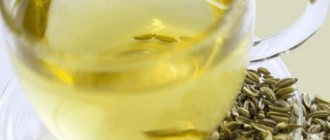Share:
Greek nut, Voloshsky, royal acorn, tree of life, food for the brain. The names are different, but we are talking about the walnut, which is familiar to us from childhood. Many attribute almost fantastic properties to this product. K. Tsiolkovsky, for example, believed that nuts could even replace bread in the future.
World walnut production is almost 1 million tons per year. It is included in the menu of astronauts and athletes. However, can this type of nut be considered absolutely safe? In this article, we will objectively examine the properties and qualities of walnuts, explain their value and possible harm to the body, formulate the main contraindications, and also indicate the daily norm.
Royal walnut
It is generally accepted that the country of origin of walnuts is Persia. But the distribution of this plant in ancient times was not limited to the environs of modern Iran. Archaeologists find fossilized remains of fruits near the Himalayas, in Turkey, Switzerland, and Italy. And the oldest walnut, believed to have grown in 8000 BC, was found in the Shanidar Cave (modern Iraq).
Content:
- Royal walnut
- Why is it still “walnut”?
- "Nut" folklore
- general characteristics
- Nutritional value
- Beneficial features
- Side effects
- How to choose the right one
- Areas of use
- Beneficial properties of nut oil
In ancient times, this plant was treated with special respect. The Persians called it royal, and only the rulers of the country had the right to eat this fruit. In Mesopotamia, lush walnut groves were a special pride. These trees were part of the famous Hanging Gardens of Babylon. Memories of walnuts are contained in the records of the Babylonians, in the Old Testament, and also in Greek mythology. By the way, it was the Greeks who are credited with the first cultivation of the Volosh tree. Interestingly, the Hellenes called this plant Persian or royal nut. They used it as food, as medicine, and as a dye for hair, fabrics and wool. In addition, the Greeks considered this product an aphrodisiac and called it “seeds of love.”
The Romans also revered the walnut fruit. Archaeologists also found these nuts in the ruins of the Temple of Isis in Pompeii. It is believed that they were sacrificed to the goddess on the day of the eruption of Vesuvius.
Application of leaves
The leaves are brewed like tea for vitaminization purposes. This drink is good for atherosclerosis and obesity.
- You can rinse if your gums are inflamed. You can rinse your hair with the decoction to strengthen it. Too strong a decoction can color your hair brown.
- For joint diseases, a healing bath is used.
- Small children are bathed in the broth.
For mycoses and staphylococcus of the skin, Yuglone is prescribed; it is created on the basis of the leaves of the royal tree.
For pain in the stomach and intestines, drink alcohol tincture in the amount of 1 tsp, taken three times a day.
Why is it still “walnut”?
We call it Greek, but other nations have found other names for it. Historians say that it is by name that it is easy to determine where the nut came from in certain countries. The plant was brought to Russia by the Byzantines, who were perceived as Greeks [1]. Hence the traditional name. As already mentioned, the Greeks called it Persian or royal, and, most likely, it came to the Hellenes from Persia. The Romans, who received the nut from the Greeks, called it walnut. But they did not forget about the Persian definition and also named the plant Juglans regia, which translated from Latin means “royal nut” or “acorn of Jupiter.”
It is interesting that all the nationalities that were part of the Roman Empire subsequently began to call this product simply a nut (in Latin - nux). The root of this word has remained in the names of the Italians, Romanians, French, Spaniards, and Portuguese to this day. The then inhabitants of the imperial periphery “christened” the plant the Voloch nut (Wallachia - modern Romania, Eastern Romance peoples). This name is preserved in Czech, Polish, Ukrainian, German, Danish, Swedish, Norwegian, Dutch and English. In the USA, where the fruit was brought from Britain, it was called “English”. But in Afghanistan the nut was named after its appearance - charmarghz, which translates as “four brains”.
Leaves
The leaves of the fruit contain no less healing properties than those contained in the fruit itself. They are saturated with aldehyde, essential oils, and keratin. The vitamin C content increases in strength as the growing season progresses and leaves develop. Among other things, they contain the substance juglone, which has bactericidal properties.
A decoction of the leaves cures wounds and promotes their healing. It is used to cure rickets and scrofula in young children. It also helps with inflammatory processes that occur in the oral cavity and periodontal disease.
"Nut" folklore
The enormous popularity of the tree has given rise to many myths, legends and superstitions associated with this plant. Thus, the Romans, who considered the walnut the fruit of the goddess of marriage and motherhood Juno, had a tradition of showering the newlyweds with kernels. The French kept bags of nuts in their homes as a symbol of abundance and longevity. And young people had a tradition: young men put a leaf from a tree in the shoes of the girl they liked.
In the 17th century, Italians considered the walnut a “witch tree” and tried not to plant it near stables, so as not to cause pestilence in domestic animals [2]. Travelers who had never stopped overnight near it also tried to pass this tree as quickly as possible.
Over the course of many centuries, in most countries of the world, attitudes towards the nut have changed dramatically: either it was revered as a fruit for brain development, or it was despised as a food that dulls mental abilities.
What do modern researchers think about this product?
Admission Tips
Walnuts should be consumed without shells, partitions and membranes between the kernels. After cleaning, they cannot be stored for long periods of time (no more than 14-20 days).
It is important to note that high-quality walnuts are brown in color (not green) and do not taste bitter.
The optimal daily intake for a healthy person is 20-40 grams per day (about 2-5 nuts), the maximum is no more than 100 grams.
During pregnancy, in order to prevent complications from the gastrointestinal tract, you should not take more than 5-7 pieces per day.
Walnuts are very high in calories, therefore, it is better to avoid them early in the morning and before bed. Taking it on an empty stomach can cause irritation of the mucous membranes of the digestive system, and in the evening it can cause overload of the gastrointestinal tract and the development of problems with going to bed. The optimal time for consumption is lunch and afternoon snack.
It is not recommended to subject nuts to any heat treatment (frying, boiling, etc.). It leads to an almost complete loss of biologically active substances. The only exception is drying in the oven for 3-5 minutes (at a temperature of 180 degrees).
Young, green, and sprouted walnuts should not be consumed, as their effect on humans has not been studied.
Following simple recommendations will allow you to unlock the full healing potential of nuts.
general characteristics
Today, over 30 cultivated varieties of walnuts are known in the world. For industrial purposes, its plantations are grown in China, Turkey, France, Moldova, Romania, Russia, the USA and many other countries. The young tree produces its first large harvest around the fourth year. Mature plants grow up to 20-30 m, and the trunk circumference can reach 7 m. These are long-lived trees. Some are two millennia old.
By the way, it is undesirable to grow vegetables near nuts, since the roots of this tree release toxins into the soil [3]. Biologists say that for safety it is better to retreat 25 m from the trunk.
The fruit of a walnut tree has three parts: the kernel (the edible part), the shell (the hard shell) and the pericarp (the green, fleshy shell). Man has found a use for all of them.
Application of oil
Walnut oil has an antimicrobial, restorative, and helps reduce inflammation effect.
Used for eye infections and otitis media. Burns, ulcers, eczema - all these ailments are treated with oil. Nursing mothers use it to treat cracked nipples. In cosmetology it is applied for a quick and even tan.
Walnut oil is taken internally for weight loss; it has a mild laxative effect and helps cleanse the body. It is also prescribed for the treatment and effective prevention of atherosclerosis and hypertension.
Nutritional value
Walnuts, along with Brazil nuts, cashews, hazelnuts, pine nuts and pistachios, belong to the Nut family. Each of these species has many nutrients. But if we talk about Volosh fruits, then most of the nutrients are contained in them in quantities close to 100 percent daily requirements.
For example, a quarter cup of peeled fruit provides exceptional servings of manganese, copper, molybdenum, biotin, omega-3 fatty acids and a variety of other components. Walnuts contain more than a dozen phenolic acids, numerous tannins, and a wide range of flavonoids.
The vitamin E found in walnuts is especially beneficial because it is present as gamma tocopherol instead of the more common naturally occurring form of alpha tocopherol. In this variation, vitamin E helps strengthen the cardiovascular system.
Another unique feature of these fruits is the following: despite the high calorie content and large amount of fat, this product is very nutritious without causing obesity. Walnuts contain more polyunsaturated fats, which are important for the heart and blood vessels, than any other nut.
In addition, this product contains the following elements:
- copper – important for the heart, bones, nervous system, immunity;
- phosphorus is a mineral essential for bone density;
- folic acid – pregnant women especially need it;
- vitamin B6 (pyridoxine) – important for the immune system, nervous system, prevents anemia;
- ellagic acid is an antioxidant that is necessary for proper heart function and prevents cancer;
- catechin is a flavonoid that is important for the heart;
- melatonin is a neurohormone necessary to ensure the proper functioning of the nervous system, heart, and blood vessels.
Nutrient content table for 100 g of raw nuts [4]
| Calorie content | 656 kcal |
| Squirrels | 16.2 g |
| Carbohydrates | 11.1 g |
| Fats | 60.8 g |
| Cellulose | 6.7 g |
| Vitamin A (retinol) | 8 mcg |
| Vitamin C (ascorbic acid) | 5.8 mg |
| Vitamin E (tocopherol) | 2.6 mg |
| Vitamin K | 2.7 mg |
| Vitamin B1 (thiamine) | 0.39 mg |
| Vitamin B2 (riboflavin) | 0.12 mg |
| Vitamin B3/PP (niacin) | 4.8 mg |
| Vitamin B5 (pantothenic acid) | 0.82 mg |
| Vitamin B6 (pyridoxine) | 0.8 mg |
| Vitamin B9 (folic acid) | 77 mcg |
| Vitamin B4 (choline) | 39.2 mg |
| Calcium | 89 mg |
| Iron | 2 mg |
| Magnesium | 120 mg |
| Phosphorus | 332 mg |
| Potassium | 474 mg |
| Sodium | 7 mg |
| Zinc | 2.57 mg |
| Copper | 527 mcg |
| Manganese | 1.9 mg |
| Selenium | 4.9 mcg |
Application of partitions
Partitions are used in the form of decoctions and tinctures for a host of ailments, such as diabetes, prostatitis, and thyroid diseases.
Membranes are used for the prevention of oncology, for such dangerous diseases as fibroids, adenoma, and mastopathy.
The antitumor properties are unique, and a large amount of iodine helps strengthen the patient’s body.
Beneficial features
Typically, the simplest foods are the healthiest for the body. This also applies to walnuts, which nature has endowed with an almost ideal ratio of proteins, healthy fats, dietary fiber, plant sterols, antioxidants and many vitamins and minerals. Therefore, among all nuts, walnut is rightfully considered the king. And by eating 6–7 fruits a day, you can protect yourself from most diseases [5].
Anti-cancer properties
Walnuts help reduce the risk of prostate and breast cancer. An experiment on laboratory mice showed that after 18 weeks of a nut diet, malignant formations in prostate cells slow down in growth, and the area of damaged tissue decreases [6]. After a series of experiments, researchers released encouraging results: this fruit can reduce the activity of cancer cells by 30–40%. And the risk of developing malignant tumors in the mammary glands with the consumption of walnuts is reduced by half.
Substances contained in fruits with anti-cancer properties:
- phytosterols;
- gamma tocopherol;
- omega-3;
- ellagic acid;
- polyphenols.
Heart Health
Volosh nuts contain the amino acid L-arginine, which is especially important for people with heart disease or predisposed to heart disease. But, by the way, precisely because of the high concentration of arginine, it is better not to use the product for people with herpes, since at the treatment stage this microelement will cause relapses of the disease.
The second component that makes nuts healthy for the heart is alpha-linolenic acid. It plays the role of an anti-inflammatory agent and prevents the pathological formation of blood clots. Studies confirm that people whose diet contains sufficient amounts of this substance are less susceptible to heart attacks [7], and they have a 50% lower mortality rate due to cardiac diseases.
But that's not all the benefits of walnuts for the heart. This product helps maintain cholesterol levels within a safe range, thereby preventing atherosclerosis and other troubles caused by “greasy” blood vessels.
Antioxidants: unique and powerful
Antioxidants are critical to health. They are believed by scientists to control the aging process by fighting free radicals. Volosh nuts contain several unique and very powerful antioxidants that are not found in other foods. Almost 90% of these elements are concentrated in the skin of the fruit. The high content of polyphenolic substances reduces the activity of oxidative processes. One study confirmed that the antioxidants contained in nuts prevent liver damage due to chemical poisoning [8].
Weight regulation
Adding voloshka nuts to your diet will help you maintain a healthy weight. This is achieved not least thanks to the high protein content, which ensures a feeling of fullness for a long time.
Improving reproductive health
Scientists have proven the influence of Volosh nuts on male fertility. Research shows that individuals who consume approximately 75 g of the fruit (a little more than half a glass) daily have markedly improved sperm quality, including sperm viability and motility [9].
Brain work
Fruits containing vitamin E, folic acid, melatonin, omega-3 fatty acids, and antioxidants have a beneficial effect on the functioning of brain cells. All of these substances are contained in walnuts. It is not for nothing that even in ancient times people considered these fruits to be beneficial for the brain. Even nature itself openly hints at this with the shape of the nut kernel.
Studies in older adults have shown that regular consumption of nuts significantly improves memory [10]. A similar effect was confirmed by an experiment with the participation of young people.
For 10 months, scientists observed laboratory mice with Alzheimer's disease. It turned out that after the nut diet, their memory and learning skills improved significantly. And after eight weeks of consuming walnuts, age-related changes in brain cells slowed down in animals [11].
In addition, walnuts are believed to be useful for treating depression, insomnia, mood swings and hyperactivity in children.
Benefits for diabetes
Dietary nut fats have a beneficial effect on metabolism in people with type 2 diabetes. It is known that one of the “side effects” of this disease is excess weight. Regular consumption of walnuts (about a quarter cup on an empty stomach) reduces not only body weight, but also the level of glucose in the bloodstream [12]. In addition, this useful product helps strengthen blood vessels, which is also important for diabetics.
Healing recipes
The healthiest way to eat nuts is in their pure form (as an addition to lunch or an afternoon snack). They can also be added in small quantities to cereals, vegetable salads, desserts and baked goods.
But in folk medicine, medicines based on them are widespread. Let's look at the recipes for the most popular ones:
- Tincture. You will need about 1 kg of walnuts. They need to remove the internal partitions, pour boiling water over them and immediately place them in a colander. Place them in a glass container, pour in 1 liter of vodka, and close the lid tightly. Infuse for about 2-3 days in a cool, dark place, strain. Apply 2-3 tbsp. l. 2 times a day (no more than 1-2 months).
- Mixed with honey. Peel 200 grams of nuts, carefully remove shells and shells, dry (in the oven or in a frying pan), add 3 tbsp. l. chopped ginger. Place the nuts in glass jars, pour in honey (about 400-500 ml). The resulting “jam” is a delicious dessert or addition to tea.
- Decoction. You will need: 20 grams of chopped walnut kernels and 200-220 ml of boiling water. Cooking recipe: pour boiling water over the kernels and cook over low heat for about 15 minutes, strain. Take 200 ml 2-3 times a day. The drug is effective for hypertension and respiratory infectious diseases.
- Infusion on leaves and peel. Thoroughly grind the dried leaves and peel (soft shell) of the walnut (preferably in a coffee grinder or blender). Pour 500 ml of boiling water and let it brew for about 2-3 hours. Strain. Drink 30-40 ml 2-3 times a day. Typically used to reduce blood cholesterol and blood pressure, and relieve constipation.
There are many recipes based on walnuts that are widely used in folk medicine.
Side effects
Products such as hair nuts, with an almost perfect chemical composition, can be dangerous in some cases. The thing is that this fruit is one of the most common and strong allergens.
Moreover, an allergy after nuts, as a rule, has serious consequences: anaphylactic shock or even death is possible (if medical assistance is not provided in time).
In addition, the product contains phytic acid, which, according to scientists, can interfere with the absorption of iron and zinc. However, people who follow a balanced diet should not worry about this.
Contraindications
Despite the enormous benefits due to the composition of walnuts, it also has some contraindications. The daily portion recommended by doctors does not exceed 100 grams. Excessive consumption of this product can cause swelling of the throat, inflammation of the tonsils, and cerebral vascular spasm. People with high blood clotting should not get carried away with it. Diseases of the skin, intestines, and pancreas require prior consultation with a specialist. The abundance of vegetable protein in the nut sometimes causes an allergic reaction. There is also individual intolerance.
The undoubted benefits of walnuts make them a necessary addition to the daily human diet. It is necessary to choose only fresh nuts, without signs of mold or darkening. If you have serious illnesses, their use in food should be agreed with your doctor.
How to choose the right one
When purchasing whole, unshelled nuts, it is important to pay attention to their weight. A healthy, fresh product should feel a little heavier in the palm of your hand than its size, and its shell should be bright brown. If there are signs of mold on the shell, the fruit is not suitable for consumption. When you have to choose among shelled nuts, it is better that it is a hermetically packaged product.
After opening the container, it is recommended to store the kernels in the refrigerator to avoid the appearance of a bitter aftertaste.
Nonessential amino acids
Among them the predominant ones are:
- glycine – stabilizes mental activity, promotes the improvement of the central nervous system;
- cysteine – improves skin texture;
- tyrosine – participates in mood regulation;
- proline – promotes collagen formation, improves skin structure;
- Alanine – participates in gluconeogenesis in the liver;
- serine – necessary for the growth of muscle tissue;
- aspartic acid – important for the functioning of the nervous and reproductive systems;
- Glutamic acid – supports the functioning of the central nervous system.
| Amino acids | Quantity in 100 grams | % of the recommended norm |
| Glycine | 1 g | 28 |
| Cysteine | 120 mg | 6 |
| Tyrosine | 580 mg | 13 |
| Proline | 710 mg | 15 |
| Alanin | 290 mg | 4 |
| Serin | 710 mg | 8 |
| Aspartic acid | 1.22 g | 100 |
| Glutamic acid | 3.1 g | 22 |
The table shows the content of essential amino acids per 100 g of nuts
Areas of use
In the food industry
Nut kernels are consumed raw, toasted or dried, sweet or salty. They are added to baked goods, sweets, desserts, and salads. This product is used to make creams and nut butters. It is especially common in oriental cuisine. Green nuts are used to make jams, marmalade and even liqueur.
In ancient times, to prevent bread from sticking during baking, crushed shells were sprinkled on the base of the stove.
In medicine
Even in ancient times, Volosh nut was used as a cure for many ailments. In particular, ancient healers prescribed it to patients after serious illnesses to restore strength. In the East, nuts were the main product for troops on campaign. And the oil of these fruits was used as a medicine to heal wounds and burns.
Woodworking
The wood of this plant is valued because of its exceptional strength. Furniture, dishes, and musical instruments are made from walnut wood. And during the First World War, propellers for airplanes were cut out of it.
Making dyes
Even in ancient times, craftsmen learned to make brown paint from nut juice, and yellow paint from green shells. This dye was actively used by weavers to give their products a beautiful color.
In ancient times, women also noticed the coloring abilities of the nut. They made hair dye from the plant. Moreover, it performed two functions at once: it gave the hair a deep brown tint and strengthened it, since this fruit is an excellent source of biotin.
Essential amino acids
Walnuts consist of 10 essential amino acids:
- tryptophan – improves sleep;
- phenylalanine – improves memory;
- isoleucine – promotes muscle tissue restoration;
- arginine – cleanses the liver of toxins;
- valine – necessary to maintain normal nitrogen balance;
- histidine – responsible for tissue growth;
- leucine – reduces blood sugar;
- threonine – participates in collagen synthesis;
- lysine – promotes calcium absorption;
- methionine – protects against radiation.
| Amino acids | 100 grams contain | % of daily value |
| Tryptophan | 170 mg | 68 |
| Phenylalanine | 0.711 g | 36 |
| Isoleucine | 0.625 g | 31 |
| Arginine | 2.278 g | 46 |
| Valin | 0.753 g | 22 |
| Histidine | 391 mg | 26 |
| Leucine | 1.17 g | 23 |
| Threonine | 0.596 g | 106 |
| Lysine | 424 mg | 27 |
| Methionine | 236 mg | 18 |
The table shows the content of essential amino acids per 100 g of nuts











